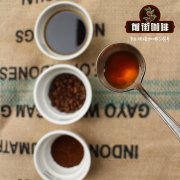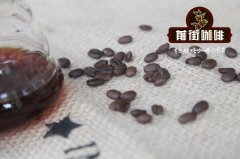Coffee flavor and raw bean treatment are different from water washing and wet planing red wine.
Coffee beans are the seeds of coffee fruit, which is also called coffee cherry. After removing the exocarp and pulp of the coffee fruit, you will get two coffee seeds, that is, coffee raw beans. Coffee fruit is easy to rot when ripe and picked, so it should be dealt with in time to facilitate storage and transportation.
[washing treatment]
Remove pectin from pulp and → sun
Water washing treatment, also known as water washing fermentation, is a popular treatment method at present, and the steps are as follows:
1. After the coffee farmers harvest the fruits, they put them into the storage tank to remove sundries and unripe beans.
2. Put the coffee fruit into the peeling machine to remove the pulp and peel to get the peeled raw beans.
3. Put the peeled raw beans into the fermentation tank and decompose the residual pectin in the inner pericarp to get the residual pectin raw beans.
4. put the raw beans with residual pectin into the washing pool, remove the pectin, and get the raw beans with endocarp.
5. put the raw beans with endocarp in the sun field or dryer for sun drying.
6. Finally, the endocarp of dried raw beans can be removed by peeling machine.
Advantages: washed coffee beans, because through repeated screening to remove defective beans, so the quality of raw beans is higher, uniform appearance, taste will also feel a very high degree of cleanliness.
Disadvantages: teaching is easy to absorb the peculiar smell of fermentation, and the sense of hierarchy is relatively simple.
[sun treatment]
Preserve the pulp pectin → drying
Sun drying is the most traditional treatment. After harvest, the fruit is dried by the natural sun. The steps are as follows:
1. After harvest, coffee farmers directly put them in the sun field and dry them in the sun.
2. Timely turning and stirring is needed in the process of sun exposure to avoid uneven drying or fermentation.
3. Dry after a few days
4. Remove the pulp and peel of the dried raw beans with a shelling machine, and take out the raw beans.
Advantages: the pectin of the coffee fruit treated by the sun treatment retains its pectin, while the pectin itself is sweet, and during the sun exposure, the sugar will be transformed into the coffee beans, so the treated coffee will be relatively sweet, rich in taste and layered.
Disadvantages: there will be more defective beans, the appearance of beans is not uniform, it is easy to absorb the peculiar smell and soil smell on the surface.
[honey treatment]
Remove the pulp and retain the pectin →
The treatment of honey is between washing and sunbathing. After the outer pulp of the coffee bean is removed, there will be a layer of mucous membrane called pectin. The traditional washing treatment will wash it off with clean water, but due to the limitation of water resources in some high-altitude areas, because this part is omitted, it is dried directly. The steps are as follows:
1. After the coffee farmers harvest the fruits, they put them into the storage tank to remove sundries and unripe beans.
2. Put the coffee fruit into the peeling machine to remove the pulp and peel, and get the peeled raw beans with pectin.
3. Put the raw beans with pectin in the sun field for sun drying.
4. Finally, the endocarp of dried raw beans can be removed by peeling machine.
Advantages: the honey treatment method retains the cleanliness of the water washing treatment, and increases the sweetness compared with the water washing, which can best preserve the original sweet flavor of the coffee fruit, and the berry flavor will also emit a red wine-like aroma.
Disadvantages: honey treatment process is vulnerable to pollution and mildew, need to constantly turn, accelerate drying, otherwise it is easy to produce bad fermentation flavor.
Grading method of honey treatment
Brazil and Colombia are generally graded according to the degree of retention of pectin, which is 40%, 100%, and farmers call their coffee 40%, 60%, 80% and 100% honey. The more pectin you keep, the closer the taste and flavor will be to the sun.
Almost all the producing areas of Costa Rica use honey treatment, and they will grade the raw coffee beans after honey treatment according to the color of coffee, which can be divided into yellow honey treatment, red honey treatment and black honey treatment. The change in color comes from the length of light during the drying process of coffee.
The coffee raw beans treated with yellow honey have the longest light time and receive the most light drying, so the drying can be completed in 1 week. Raw coffee beans treated with red honey reduce the time spent in the sun, and some are useful in shading or in the shade, usually drying for 2-3 weeks. Black honey takes the longest time to dry. If the weather is clear, the grower will cover part of the sun in order to reduce the sunlight time. The coffee beans will dry for the longest and shortest time in the dark, with a drying time of at least 2 weeks to prevent drying too quickly and make the sugar conversion more fully. The treatment of coffee beans with black honey is the most complex, so the labor cost is high and the price is more expensive.
In contrast, the longer the sunshine, the closer the taste and flavor will be to the sun. The drying time also varies according to the local climate, temperature and humidity.
[wet planing]
In some areas, the humidity is high all the year round, and according to the normal washing method, the drying time will be twice as long as the normal treatment method, and if the coffee beans are not dried in time, excessive mildew will easily occur in fermentation, so the wet planing method is derived. The steps are as follows:
1. After the coffee farmers harvest the fruits, they put them into the storage tank to remove sundries and unripe beans.
2. Put the peeling machine to remove the pulp and peel, and retain the endocarp and pectin.
3. Put it in a concrete box or plastic bucket to ferment overnight and decompose the pectin
4. Wash the coffee fruit and remove pectin
5. put it in the sun for 2-3 days to reduce its water content to 20-24%, when the endocarp is in the semi-dry stage.
6. Use a machine to remove endocarp
7. Continue drying so that the water content is reduced to 12-13%, dry in the sun during the day, and continue to ferment in sacks at night until the drying is finished.
Advantages: by putting it in a barrel for dry body fermentation, the pectin sugar will be fully fermented to increase the flavor of the coffee.
Disadvantages: when using the wet planing method, because the endocarp is removed when it is not completely dry, the endocarp in this condition is not easy to remove, and if you peel off more, the coffee beans will be damaged, so bauhinia beans often appear. At the same time, the wet planing method scrapes off the peel, allowing the beans to come into direct contact with the air, so the ratio of moldy beans to defective beans is higher than that of washing and sun treatment.
Wine flavor and sun treatment
Wine-flavor sun treatment does not mean the addition of red wine in the process of raw bean treatment, but its fermentation method and degree is similar to that of red wine. The treatment step is similar to the sun treatment, but the fermentation time is longer. The steps are as follows:.
1. After picking ripe red fruits, coffee farmers put them directly in the sun field and dry them in the sun.
2. The degree of fermentation will be detected continuously during the exposure process.
3. Dry after a few days
4. Remove the pulp and peel of the dried raw beans with a shelling machine, and take out the raw beans.
Advantages: wine-scented coffee beans have a higher rate of ripe red fruit and longer fermentation time than ordinary sun-cured coffee beans, thus increasing the sweetness of coffee, rich layering, and taste similar to the fermented flavor of red wine.
Disadvantages: this method of treatment is labor-consuming and time-consuming, so it cannot be mass-produced, so it is generally used to handle some of the more expensive coffee beans.

Important Notice :
前街咖啡 FrontStreet Coffee has moved to new addredd:
FrontStreet Coffee Address: 315,Donghua East Road,GuangZhou
Tel:020 38364473
- Prev

Is the daily latte really coffee with plain milk? Can you drink coffee with milk powder?
Professional coffee knowledge exchange more coffee bean information please follow the coffee workshop (Wechat official account cafe_style) do you drink lattes with coffee and milk? There is no doubt that you can make your own coffee and add your own milk, but if the supermarket clerk tells you it is to add fresh milk, will you believe it? It was a slip of the tongue. In fact, it must be fresh milk that was not packed in a carton. Used by the whole family
- Next

What kind of red wine treatment is it?
Professional coffee knowledge exchange more coffee bean information please pay attention to the coffee workshop (Wechat official account cafe_style) what is the treatment of red wine? The red wine treatment of coffee beans, also known as red wine treatment, is inspired by the brewing technology of red wine. At present, only eight estates in Colombia have successfully introduced coffee beans using this treatment to the market, according to
Related
- What is the meaning of lactic acid fermentation with coffee bean treatment?
- How to judge the state of foam by sound?
- How does the latte pull out the unicorn pattern? Come to get for a little trick to improve the flower pull!
- Will flower pulling affect the taste of the latte?
- Do you know the history of coffee?
- The difference between honey treatment and sun washing what is raisin honey treatment?
- What kind of milk can a novice use to make coffee foam to keep the foam longer? The correct method and skills of milking tutorial sharing
- Why do washed coffee beans taste sour? Flavor characteristics of washed Coffee
- Introduction to the skill of how to practice the size and height of water injection around the circle of hand-brewed coffee
- How do beginners practice coffee flower drawing from scratch?

